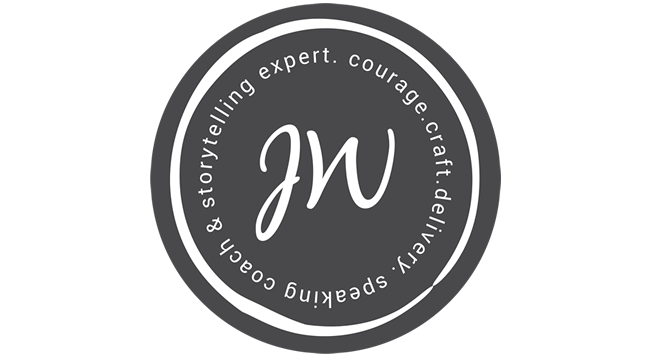When a Story isn’t Enough
July 29th, 2019

If you’ve been around these parts for a while, you’ve certainly heard me say that telling a story is the shortest distance between two people, right?
It’s the best way to show your humanity and let your audience know you’re an actual human person who lives and breathes out there in the world.
It’s the best way to SHOW your idea rather than TELL your idea.
It’s the best way to make a real connections so you can more effectively convey your message.
But a story just for a story’s sake doesn’t always work.
As someone who preaches the value of a good story, I often find myself in the audience when someone is telling a story thinking, “yeah, yeah, yeah, get to the point.”
Then I sheepishly say to myself “But Johanna, she’s telling a story. Isn’t that what you’re all about is telling stories?”
Absolutely, but here’s where so many people go wrong.
Too many people think “I have to tell a story!” And then they tell a story just because they think they’re supposed to tell a story.
Or they tell the whoooole story — as in every last curve of the story.
Or they tell the story without really understanding why they’re telling it.
Here’s the thing: Stories! Yes please! More stories! But the story alone is not enough.
The story is only as good as the idea it’s conveying.
You have to know precisely WHY you’re telling the story, and which parts of the story are necessary to serve that why.
Here are some tips to help your story not groan:
If you’re telling a story about YOU, it’s essential to remember that IT’S NOT REALLY ABOUT YOU! This means when you’re crafting the story, don’t try to tell everything. Ask the question, why will this matter to the listener? Which part of this story will they best relate to? How much can I leave out and still have the story make sense?
Get clear about the IDEA the story is conveying. What’s the aha? What’s the take-away? What’s the lesson from the story? When you’re really clear about where you’re going and why you’re telling this story, you can better determine what parts of the story are essential to convey that idea.
You gotta know the before and after. A story is about a CHANGE. Something changes. Something is different at the end than it was at the beginning. This change is usually the aha. So when you know what the aha is, be sure you know what it was like BEFORE the change happened. Show that really clearly, that way I’ll care way more when you get to the aha.
Be willing to be vulnerable. This is not about pouring your heart out all over the place and sharing all the intricacies of your childhood trauma. This is about being vulnerable. It’s about showing your humanity. It’s about not being all shiny and perfect and out of reach. It’s about finding that spot where your audience will say “Oh yeah she’s like me. She really gets me.”
You gotta know who’s in the audience, what they care about and what they long for. Tell the story that is relevant to them. Tell the story that speaks to what they’re struggling with right now. Even if you tell the same story to audiences that have different concerns and different goals, you can frame the story so that it’s entirely relevant to this particular audience.
When you’re sitting at the kitchen table or around a campfire, I’m all for taking the wild and circuitous path to the destination, but when you’re telling a story from the stage, in service of a larger idea you’re trying to convey, you gotta craft a journey for your audience that connects to your idea and that is relevant to them. That’s when stories stick.
What do you think makes a great story? When do you lean in to hear more?
One response to “When a Story isn’t Enough”
Leave a Reply
« Life outside your comfort zone | Four tips to Getting Unstuck During a Presentation »


 FACEBOOK
FACEBOOK INSTAGRAM
INSTAGRAM LINKEDIN
LINKEDIN SUBSCRIBE
SUBSCRIBE
VERY HELPFUL !!